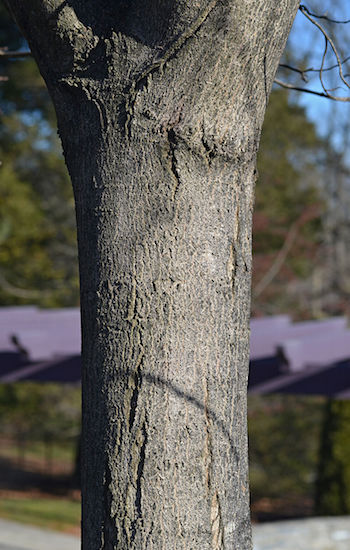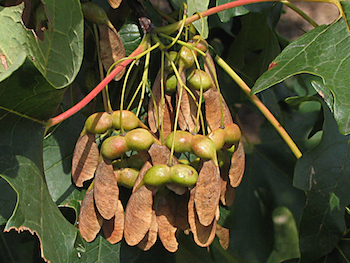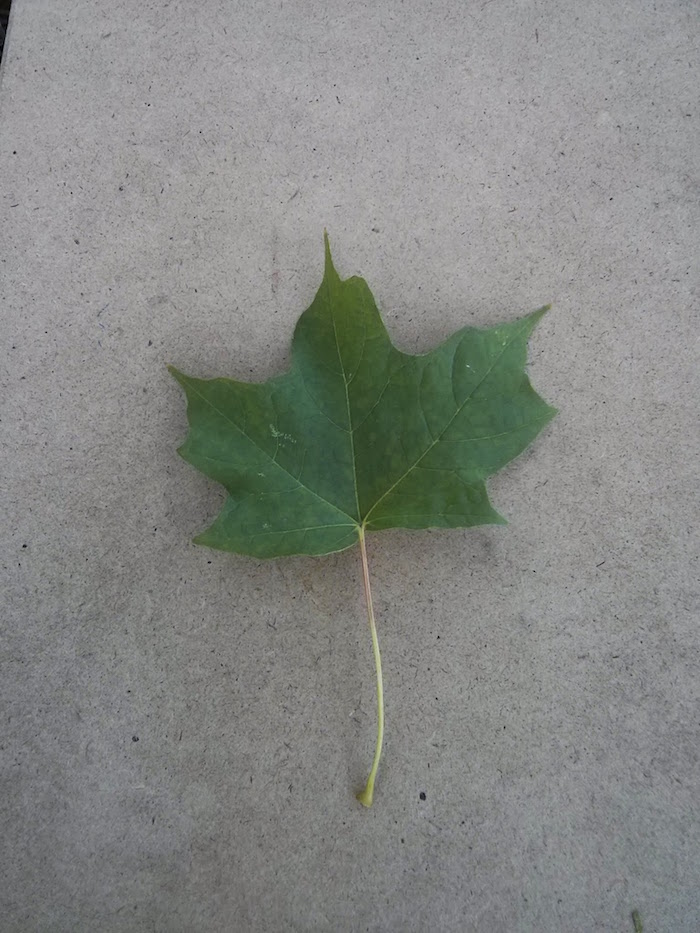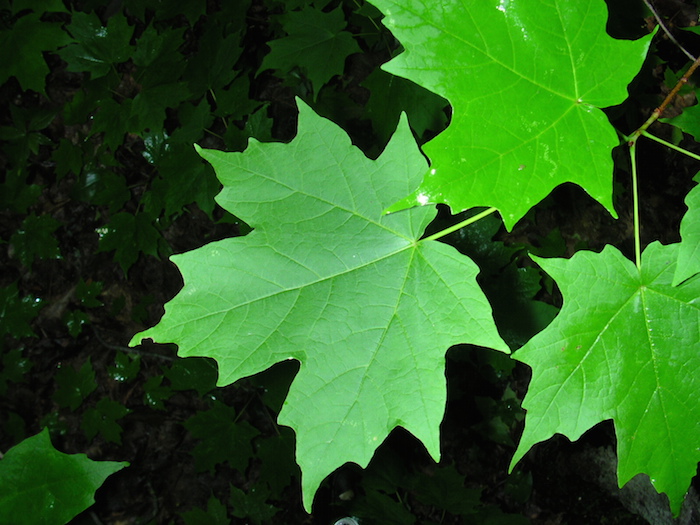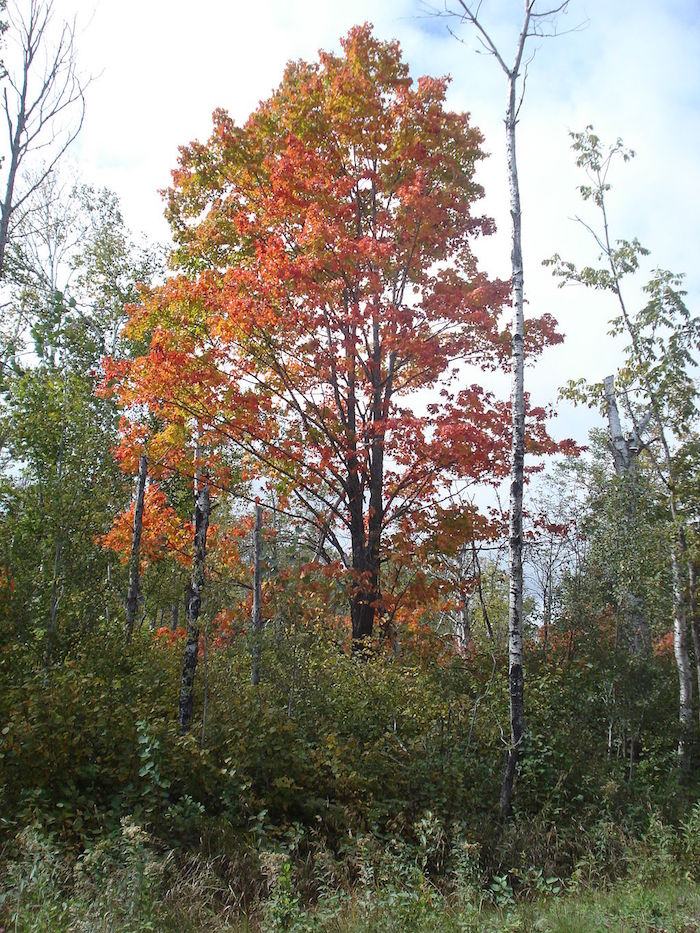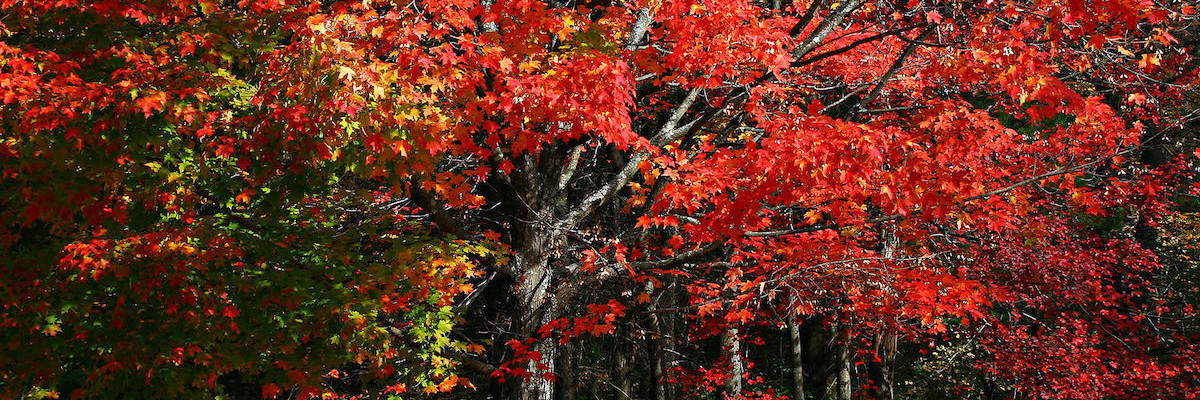
Description:
Sugar Maple is one of the most common maple species in Minnesota, and is best known as the source of most maple syrup. Leaves are simple and opposite, with five dark green, pointed lobes. Flowers are horticultural unremarkable, and are generally dioecious, meaning trees have only male or female flowers, although some trees have flowers of both sexes. Both types of flowers are small, green clusters of between 8 and 14 flowers, with female flowers developing into winged nutlets, known as samaras. The bark is grayish-brown and deeply grooved.
Sugar maples are best known as the source of maple syrup. Sugar maple sap has twice the sugar content of other native maples, and is most commonly used in syrup production. Sugar maple syrup was the primary source of sweetener, along with honey, for Native American tribes and European colonists. It is also a popular landscape tree, as the fall color often provides excellent reds, oranges, and yellows in the landscape. It is also an important timber tree, with the hard wood used for furniture, paneling, and flooring.
Sugar maple is the state tree of New York, Vermont, West Virginia, and our neighbor, Wisconsin. Sugar maple was also the focus of a recent research paper examining the effects of competition and climate change on tree growth, by Rachel Putnam and Peter Reich.
Issues:
Sugar maples do not make great street trees, as they are relatively intolerant to salt spray and compacted soil. They are also highly susceptible to the usual diseases of maple, such as verticillium wilt.
Other Resources:
Photo Credit: Public Domain CC by SA 2.0
Photo Credit: Albert Herring CC By 2.0
